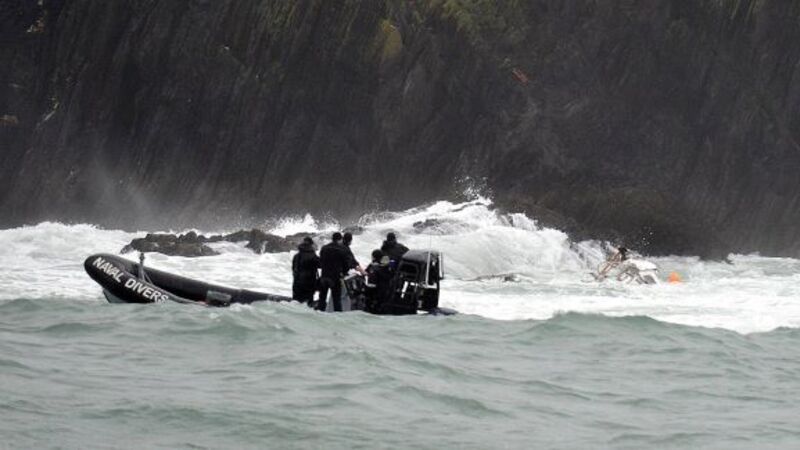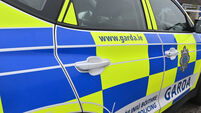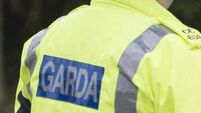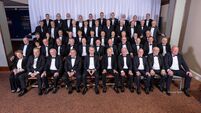Trawler changed course significantly

Eoghan O’Toole, a marine surveyor working for the Department of Transport, told the inquest into the deaths of five of the Tit Bonhomme’s crew that, at 5.28am on Jan 15, 2012, the vessel had been on “a completely normal course” before changing its direction “significantly” at 5.29am.
Six minutes later, the trawler crashed into Adam’s Island, with the ultimate loss of five lives. Mr O’Toole said the mapping of the ship’s route was done using AIS (Automated Information Systems) or satellite data, and suggested to him that “it required some human input”.
Four of the six crew were asleep in their bunks at the time of impact, meaning only skipper Michael Hayes, a 52-year-old from Helvick in Co Waterford, and 22-year-old Saied Ali Eldin were on the bridge at the time of impact.
The report by the Marine Casualties Investigation Bureau suggested crew fatigue was a factor but also said that, on its return journey to Union Hall, the vessel had steamed on an almost constant heading and speed until its collision.
However, the mapping of the course of the boat revealed yesterday shows a “significant turn” at 5.29am, with Mr O’Toole claiming it was unlikely that either a electrical or mechanical failure or freakish weather conditions could be responsible.
Mr O’Toole said: “There are two options: Either the autopilot is turned off in one of two ways, or that somebody turns the dial or moves the panel to give the course change.”
He said he taken external advice as to whether the wind could have forced the course change in the event of the auto helm being switched off, but said that while it could not be excluded, it was unlikely the wind could turn that fast.
“From virtually the moment it has altered course, it is heading straight for the island,” he said.
At 5.35.25am the boat impacted with the island, reducing in speed from 4.4 knots to 1.7 knots in just seven seconds.
He said two distinct marks on rocks on the island showed how the boat rammed into it, being driven down by the force of the sea, its bow striking the rocks, coming back up before striking it again.
At 5.35.36am, the vessel was still pointing in the same direction, yet by 5.36.02am it was turning out towards the sea, having turned more than 90 degrees in what the coroner Frank O’Connell said was a “violent” change. By 5.37.13am it had changed direction again and was back facing into the island.
Mr O’Toole said of the state of the boat: “It is pretty much bouncing off the side of the island.
“We would probably describe it as being stranded.”
The inquest also heard evidence from Mr O’Toole that the emergency switch for alternative battery power was not triggered on board.
He also said that it was likely that the two onboard radios were inoperable as a result of batteries not being properly inserted, possibly as a result of the damage caused by the impact.
The inquest had previously heard evidence from the sole survivor, Abdelbaky Mohamed, that, on entering the wheel house following the impact, batteries were strewn all over the floor.
The final AIS signal from the boat was issued at 5.38.23am, meaning that was when the power outed on board, less than three minutes after impact. Heading information was lost just 42 seconds after impact, possibly due to a loss of an antennae, said Mr O’Toole.
All this occurred before the first 999 call was made from the Tit Bonhomme at 5.46.05am.
On the Digital Selective Calling button, which did not emit a call following the grounding, he said: “If it was pressed it is very unlikely that it [the call] would not get through.” Mr O’Connell countered that it was “a big assumption” that the radios on board were working.
In her statement, Michael Hayes’s widow Kathleen said she believed Mr Hayes would have done everything possible to alert others to the situation faced by those on board following the collision with the island.
There was also confusion over whether the boat had undergone an interim safety check the previous October, but Mr O’Toole confirmed it was fully certified.
Transcript of the first call, made at 5.46am on Jan 15, 2012, from a mobile phone. This call lasted 2 minutes and 48 seconds.
Operator: “Emergency what service do you require? Do you need Garda, ambulance, fire, or coastguard?”
Caller: “Hello.”
O: “Do you need Garda, ambulance, fire, or coastguard?”
C: “We need a helicopter quick.”
Second voice in the background: “We’re after hitting the island on the way into Union Hall.”
O: “Caller, do you need Garda, ambulance, fire, or coastguard?”
Second voice: “On the way into Union Hall. We need a helicopter quick.”
O: “Do you need help in Cork?”
C:“Ya”
O: “In which part of Cork do you need help?”
New voice on line: “Hello.”
O: “Connecting you to Garda.”
In this 10 seconds, a new voice comes on the line and says: “Yes we’re at, helicopter please, we’re after hitting the island off — going into Union Hall. Boat is aground, the vessel, ah shit, is the Tit Bonhomme, please hurry.” This is spoken as the operator passes the call to gardaí.
Garda John O’Neill: “Good morning, Bandon Garda Station.”
O: “Ballyshannon connecting 085-7737107 with no direct service request made or location confirmed. My records currently show Baurnahulla in Cork.”
GO’N: “Hello, this is Bandon Garda Station.”
There is further discussion between the operator and the garda before the call is closed.
In the second phone call, there is brief discussion between those on board and an operator before the call is patched through to Valentia Coastgaurd.
Coast Guard: “Excuse me, first and foremost you are going to have to tell me where you are and what the nature of your emergency is?”
Michael Hayes: “I can’t hear you.”
CG: “Hello.”
Voice on line: “Ah shit.”
CG: “Hello, hello, hello, hello.”
MH: “Hello.”
CG: “Hello there, hello, hello. How are you? Can you tell me what’s the nature of your emergency?”
CG: “What’s the nature of your emergency?”
Kevin Kershaw: “Hello, hello.”
CG: “Yes I can hear you. Can you hear me?”
KK: “Yes I can.”
CG: “OK now I need you to speak slowly and clearly.”
KK: “Right.”
CG: “What is the nature of your emergency?”
KK: “We need a boat, we need a helicopter.”
CG: “What is the nature of your emergency?”
KK: “What is the nature of... we’re sinking, we’re going underwater.”
CG: “Right, You’re sinking. What is your position?”
KK: “We’re three-quarters under water, please.”
CG: “What is your position?”
KK: “What’s your position?
MH: “The island off Union Hall for fuck’s sake.”
CG: “I need your position.”
KK: “Agh... we’re at... we’re at Union Hall... come on, we’re going to capsize.”
CG: “OK. Tell me do you have a latitude and a longitude.”
O: “The caller has cleared the line there but I can give you a longitude and latitude if you need it there?
CG: “Yes please.”
O: “Yeah, latitude is 51.5303.”
CG: “5303.”
O: “Yeah longitude is -8.”
CG: “008.”
O: “Minus -8.9722.”
CG: “9722. Sorry operator.”
O:“Yes.”
CG: “Yeah, where are you getting this position?”
O: “My records can show Dundeady.”
CG: “Dun?”
O: “D.U.N.D.E.A.D.Y. in Cork.”
CG: “D.E.A.D.Y. Dundeady, Cork. Is that near Union Hall?”
O: “I, to be honest I haven’t got a clue, I’m in my base in Dublin so...”
CG:“Ok, fine.”
O: “Ok.”
CG: “So they say they are sinking.”
O: “He mentioned something about that they are three-quarters under the water, that something’s sinking. He sounded a bit panicked so I don’t know.”
CG: “Ok fine.”
O: “Ok.”
CG: “Thanks a million bye bye.”











